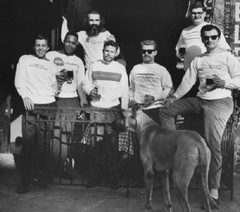In 1957, Rosa Panvini and her daughter Amalia offered to sell the diaries of dictator Benito Mussolini to
Life magazine and the Milan daily
Corriere della Sera. The two women claimed the diaries had been given to their late father after the war for safekeeping, by a friend of a friend of Mussolini. Before the sale could be completed, Italian police arrested the Panvinis and charged them with forgery and fraud. In 1968, more of the same forged volumes resurfaced, at which time the
London Sunday Times paid close to $300,000 for them, before realizing they were fake. [
Life - May 3, 1968]

